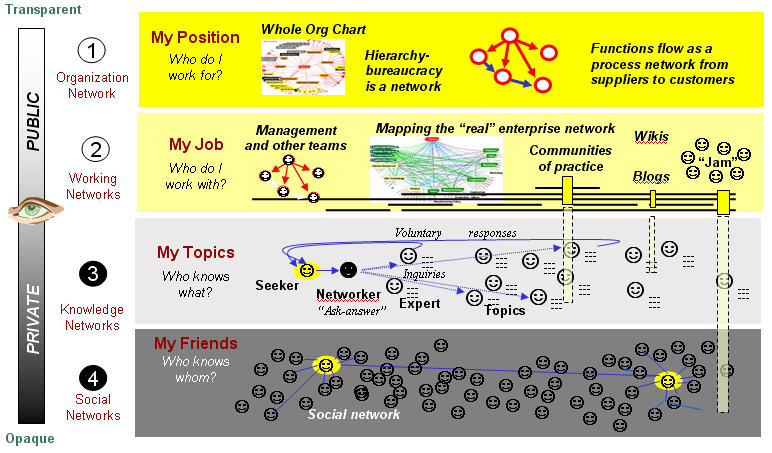An organization is a network that holds within it many other networks. At the very least, it is a mix of networks of people and networks of positions. For collaboration to happen, these two networks need to be transparent. People's social networks, on the other hand, are opaque, unless people choose to make them public. |
Level 1: Organizational Network of Positions and formal relationships
The formal network of positions--the organization chart--provides the classification system for the enterprise. Each position nests in a part of the organization's structure. Generally speaking, the organization's design implies the process flow of organizational functions from "upstream-to-downstream."
Level 2: Network of Work in teams and processes
Work gets done in team, the operating networks that form within and around the formal network. While each of us has (for the most part) one unique title and formal position, we play many roles in different teams and participate in a number of communities.
Level 3: Network of Knowledge based on personal experience
People have considerable knowledge that they can share with others, if they are so inclined. This network of what people know nourishes breakthroughs, creativity, and problem solving within organizations.
Level 4: Network of People interacting as a social network
People's personal relationships are first and foremost private. Yet the map of who-knows-whom marks pathways of trust, routes among people that make things easier. It also shows routes that are blocked. For the full picture of the organization's networks, these social connections occupy the foundation. |
